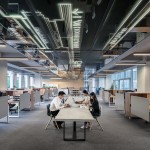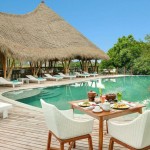The Main Differences Between A Manager And An Executive Office Chair

As you might expect, an executive chair is of a higher specification than a manager chair. Of course, this is not to say that an executive chair is necessarily better than a manager chair. They just both have different appearances and purposes.

In basic principal, here are the differences between manager and executive chairs:
Manager Officer Chair And
- Manager chairs have less adjustable features.
- Manager chairs are more compact in comparison.
- Manager chairs are designed for prolonged, slightly mobile use (rolling from one area of a desk to another, or across to a printer behind you, for example).
Executive Office Chair
- Executive chairs usually include more formal looking design touches (leather and faux-leather armrests, for example)
- Executive chairs usually have a higher back.
- Executive chairs are usually a little bigger.
- Executive chairs are designed for more prolonged, static use.
- Executive chairs often cost a little more.

Common Misconceptions About Manager and Executive Chairs
Understandably, many offices end up purchasing manager chairs for general managers, executive chairs for the execs and directors and more budget friendly options for everybody else.
This logic is flawed because the more features a chair has and the more well designed it is, usually means that it is better suited for prolonged and frequent heavy use. For example, who in most offices puts their chair through the most use: somebody like a receptionist or admin assistant, as they constantly are in and out of their chair, rolling between the phone, printer and their computer, and so on. Whereas the business owner or a director will use their chair much less because they will be liaising with staff members around the office and be in and out of meeting rooms, that is when they are in the office and not networking with clients or attending other offices.
But who is more likely to have the most expensive executive chair? The oft out of the office director. And who is likely to replace their chair more often? The receptionist or admin assistant. So, it is quick to see how a false saving can develop when less expensive (designed for lighter use) chairs are worn out and replaced more frequently.
Especially when the wrong chair has been chosen for many staff.

Budget
Hopefully you have an idea or firm confirmation of what your overall furniture budget it is. Or maybe an allowance of what the business can spend on your office chair. Either way, consider how many chairs you will need and begin looking at chairs in the various price categories, once you have followed these other considerations.
Don't forget to factor in any delivery costs too.
Use
Will the chair be used heavily and extensively? Will the use be semi-mobile as the move between colleague's desks and their own, which is common in a small office? Will the user be working on a computer or laptop or neither? This latter factor should determine what kind of ergonomic factors need to be included in their chair.
Adjustable overall seat height, back rest, elbow and arm rest adjustments, seat lean... these are all things that need to be adjusted by those using their chair for longer than an hour at a time.
Style
Is appearance important? This is a common deciding factor for directors who need to convey their position of authority to employees and potential clients or existing customers. A big, posh looking chair equals trust, power and authority. That's understandable, if not a little petty when taken at face value.
But little things add up when it comes to perceptions of employees and a business.

We Love to Assist You!
How to contact us? We provide ways to communicate with you!
Drop us an at https://wasap.my/60197579713 (MYND Team) now!
at https://wasap.my/60197579713 (MYND Team) now!
Chat with us now at https://www.messenger.com/t/360680051770
at https://www.messenger.com/t/360680051770
Send us an email now at [email protected]
now at [email protected]
Let the icons lead you the way!









_page20_image40-150x150h.jpg)

















Leave a Comment